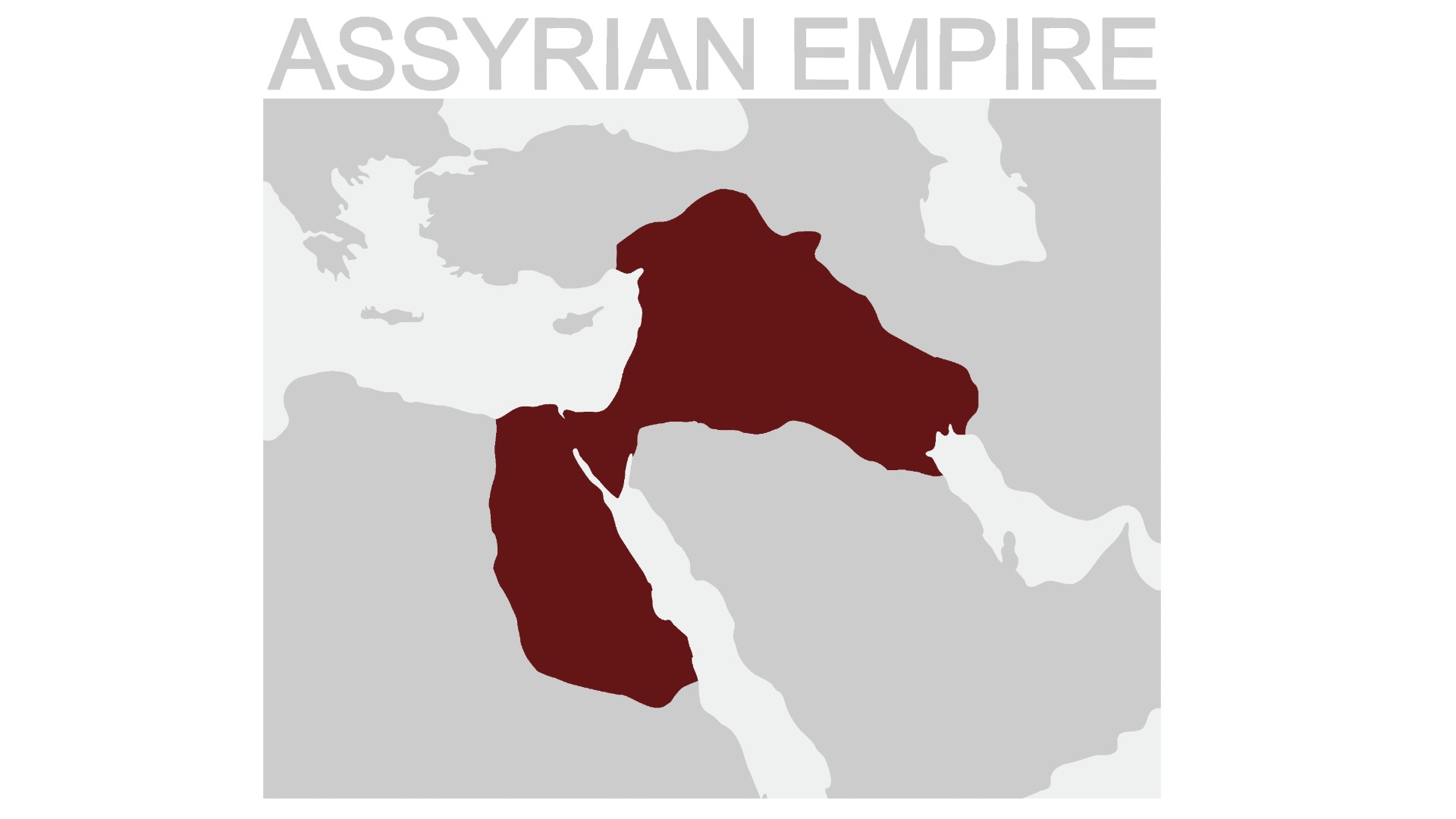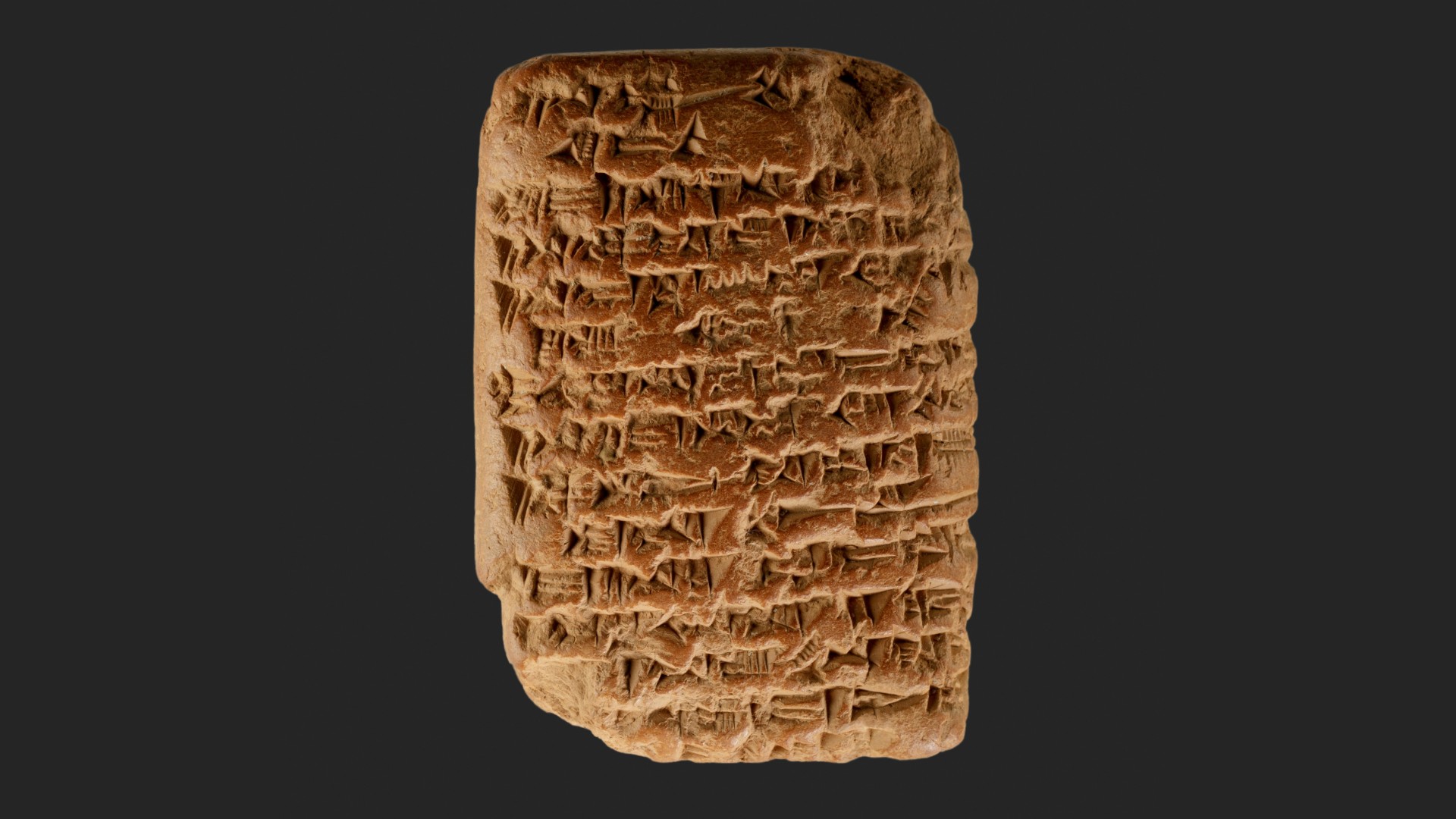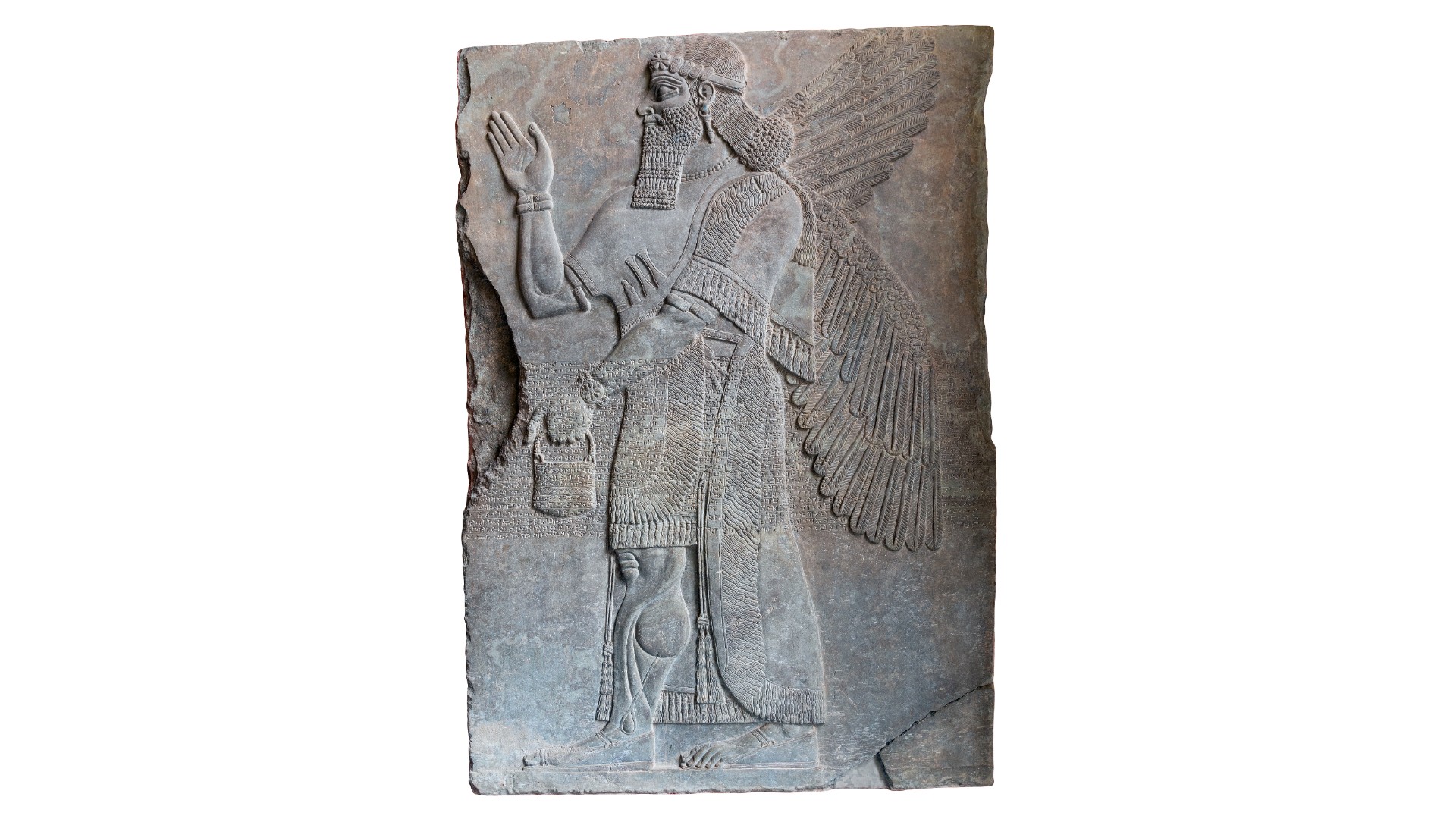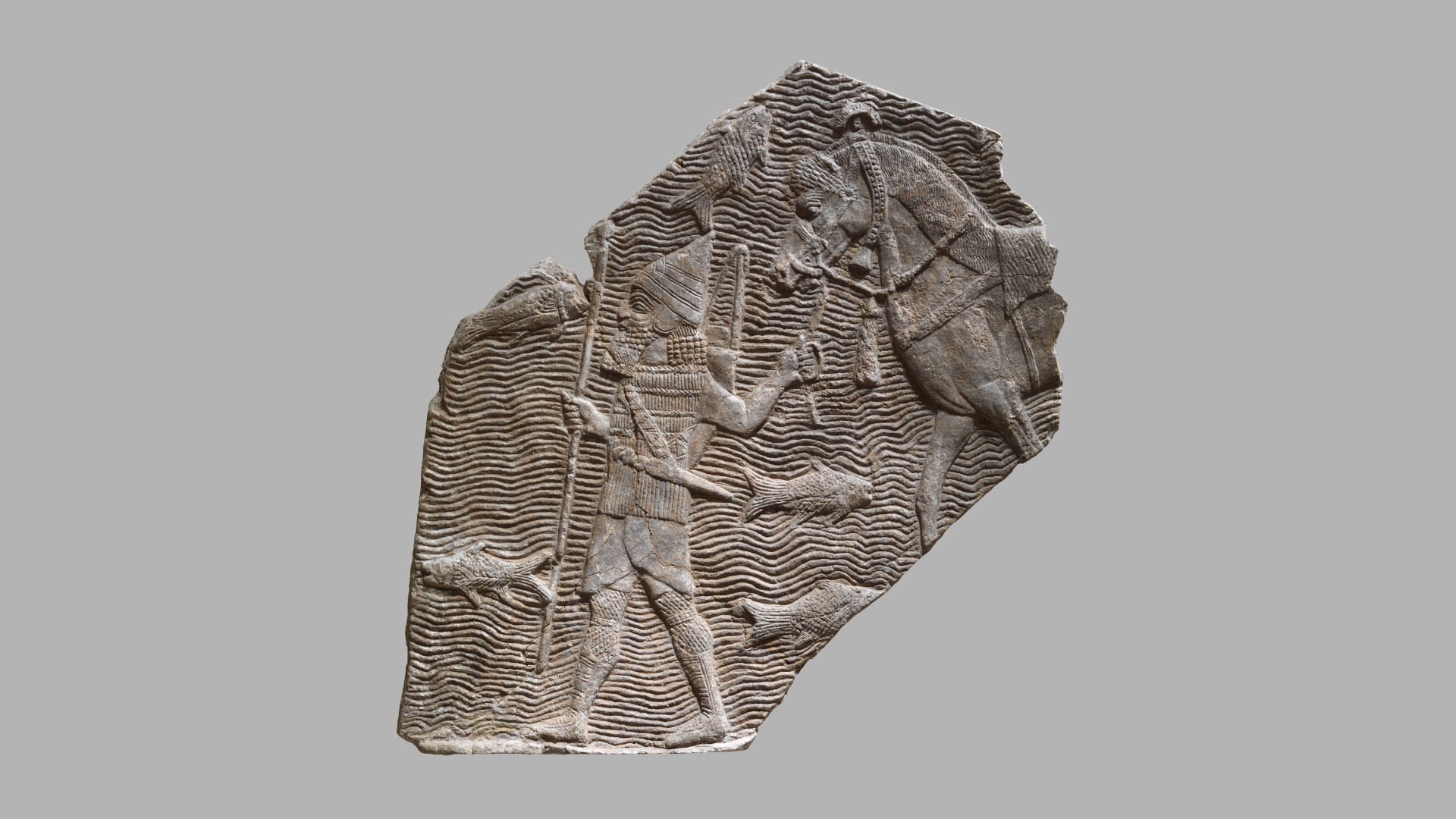Who are the Assyrians?
The ancient Assyrains had a vast empire in the Middle East.
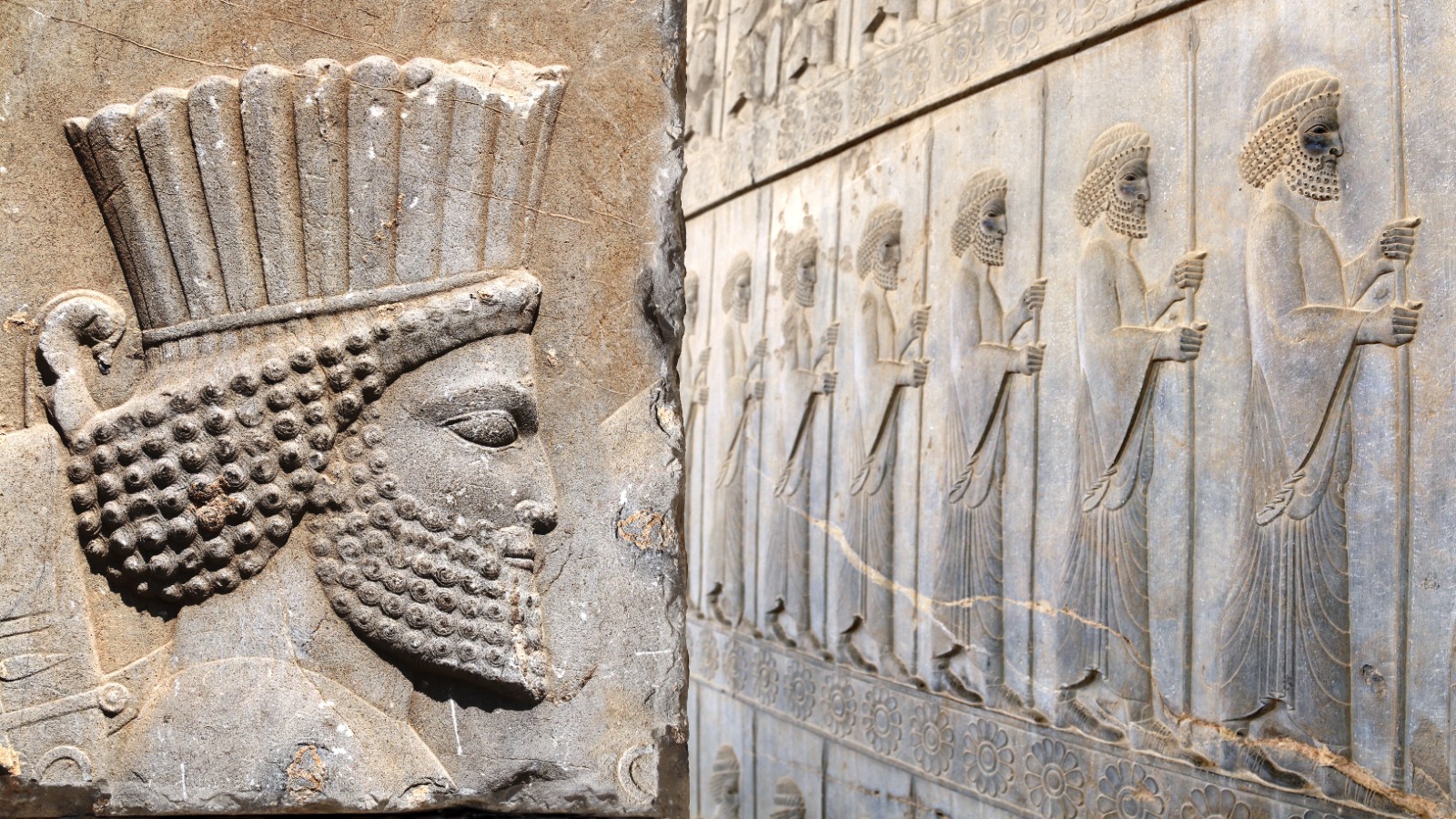
The Assyrians are a people who have lived in the Middle East since ancient times and today can be found all over the world. They are well known for their vast ancient empire; ancient cities, such as Nimrud and Nineveh; and their fierce invasions, including into the Kingdom of Judah and Egypt.
In ancient times, the Assyrian civilization was often centered at the city of Assur (also called Ashur), named after the supreme god of Assyria and the ruins of the city are located in what is now northern Iraq. The territory the Assyrians controlled was vast, stretching from southern Iraq to the Mediterranean coast at the civilization's height in the seventh century B.C.
Before the city of Assur gained its independence about 4,000 years ago, it was controlled by a people known as the Sumerians, whose civilization declined because of a mix of political, military and environmental problems.
Modern-day scholars often divide Assyrian history into three periods: the Old Assyrian, the Middle Assyrian and the Neo-Assyrian. However, scholars disagree about the time span each period covers.
Old Assyrian period
The Old Assyrian period generally refers to the time after Assyria first gained independence, around 2000 B.C.
In the first two centuries after independence Assur was a city focussed on trade, wrote Klaas Veenhof, an emeritus professor of Assyriology at Leiden University in a paper published in the book "A Companion to Assyria" (Wiley Blackwell, 2017). The city was no more than 40 hectares in size and held a population of between 5000-8000 people, something that likely limited its military power, Veenhof noted.
Its early rulers didn't refer to themselves as a "king" in their inscriptions; instead, they called themselves a "vicegerent" (a word that can mean "governor") of the god Ashur, Amélie Kuhrt, professor emeritus of ancient Near Eastern history at University College London, wrote in her book "The Ancient Near East, c. 3000-330 BC" (Routledge, 1995).
Get the world’s most fascinating discoveries delivered straight to your inbox.
Part of an inscription found on an Assyrian temple's stairway reads, "Erishum, the vicegerent of the god Ashur, son of Ilushuma, vicegerent of the god Ashur, built the entire temple area of the temple of the god Ashur" (translation by Albert Kirk Grayson). Why Assyria's early rulers used such modest titles (governor as opposed to king) is a mystery that scholars are still trying to understand.
The people of the city spoke Assyrian, which is a "distinct language, albeit closely related to Babylonian, which was used in the regions south of Assur," Karen Radner, the Alexander von Humboldt chair for the ancient history of the Near and Middle East at Ludwig Maximilian University of Munich, wrote in her book "Ancient Assyria: A Very Short Introduction" (Oxford University Press, 2015).
In about 1800 B.C., a ruler named Shamshi-Adad I (sometimes spelled Samsi-Adad) took control of Assur. He incorporated the city into a sizable amount of territory that he already controlled in what is now Iraq and Syria. Unlike the previous rulers of Assur, Shamshi-Adad made no pretense of modesty, instead giving himself a title that scholars sometimes translate as "king of the universe," wrote Albert Grayson, professor emeritus of Assyriology at the University of Toronto, in the book "Assyrian Royal Inscriptions: From the beginning to Ashur-resha-ishi I" (Otto Harrassowitz, 1972).
Shamshi-Adad's empire did not last long. After his death, it collapsed and the kingdoms of Ekallatum, Eshnunna and Babylon all controlled Assur at some point during the period of about 1775 B.C. to 1720 B.C.," Shigeo Yamada, a history professor at the University of Tsukuba, wrote in a paper published in the book "A Companion to Assyria". By around 1500 B.C., Assur was under strong influence, if not control, of a kingdom called Mitanni, Yamada wrote.
Middle Assyrian period
During the 14th century B.C., the kingdom of Mitanni began to fade, and those in charge of Assur began to assert the city's independence. Modern-day scholars often call this period of newfound Assyrian independence the Middle Assyrian period. At the start of this period, Assur-uballit I (who reigned from around 1363 B.C. to 1328 B.C.) came to power at Assur and claimed independence from Mitanni, Stefan Jacob, a researcher at Heidelberg University in Germany, wrote in a paper that was also published in "A Companion to Assyria." In a letter to the pharaoh of Egypt, Assur-uballit I (also called Ashur-uballit I) referred to himself as a "brother" of the pharaoh claiming "equal status with him," Jacob wrote. Assur-uballit I also attempted to use military conquest to expand the territory he controlled.
His successors further enlarged Assyrian territory. Adad-nirari I (who reigned from around 1305 B.C. to 1274 B.C.) conquered Mitanni, taking over a kingdom that had ruled Assyria a century earlier. In ancient texts, Adad-nirari I claimed that he "sowed salt over" the Mittani capital of Taidu and imposed labor obligations on the city's survivors. He constructed a palace over Taidu saying that he built it "from top to bottom" and deposited a stele (an inscription carved on stone) to mark his control of the city (translation by Albert Kirk Grayson). Adad-nirari I also called himself "king of the universe," a title that future Assyrian kings would also use.
Ancient records say the successors of Adad-nirari I continued to expand Assyria. The Assyrians conquered Babylon during the reign of Tukulti-Ninurta I (1243 B.C. to 1207 B.C.) and reached the Mediterranean coast during the reign of Tiglath-Pileser I (1114 B.C. to 1076 B.C.). Tiglath-Pileser marked the achievement by bringing back cedar wood for building projects, ancient texts say.
The martial prowess and skill of the Assyrian kings continued to be emphasized in ancient inscriptions. Tiglath-Pileser I boasted in one inscription that "altogether I conquered 42 lands and their rulers" from across the Middle East, adding that he was a "valiant man" with an "unrivaled bow" who was such a good hunter that "I killed on foot 120 lions with my wildly vigorous assault" (translation by Albert Kirk Grayson).
However, inscriptions from Tiglath-Pileser's time, and that of his successors, point to problems Assyria was experiencing. Cities and civilizations across the Middle East were collapsing as as a group of people from the Aegean that are sometimes called the "sea people," arrived in the region, displacing local populations and collapsing trade networks. Assyrian records indicate that Tiglath-Pileser and his successors frequently fought against the Arameans, a group of people who were displaced or otherwise caught up in the chaos. In the two centuries following Tiglath-Pileser's conquests, Assyria's territory contracted, but the kingdom retained control of Assur and nearby areas. Assyria didn't expand again until the 10th century B.C.
Neo-Assyrian period
The time period from the late 10th century B.C. when the Assyrians started expanding again, to the destruction of the Assyrian Empire around 600 B.C. is often called the Neo-Assyrian period. During this time, the territory Assyria controlled reached its greatest geographic size.
At the start of this time period, Assyria had lost a considerable amount of territory. "Step by step, however, a number of assertive and ruthless Assyrian kings of the late tenth and ninth centuries manage to reconquer the lost lands and reestablish Assyrian power … ," Eckart Frahm, an Assyriology professor at Yale University, wrote in a paper that was also published in "A Companion to Assyria."
Under Ashurnasirpal II (reign 883 B.C. to 859 B.C.), the Assyrians reconquered much of the territory they had once controlled, again reaching the Mediterranean coast. Ashurnasirpal II also constructed a new palace at the city of Nimrud (also known as Kalhu) and used this city as Assyria's capital, Frahm wrote. This policy of the king keeping himself some distance from Assur would be continued by future Assyrian kings. Sargon II (reign ca. 721 B.C. to 705 B.C.) founded a new city called Khorsabad, making it his capital, while Sennacherib (reign 704 B.C. to 681 B.C.) constructed a new palace at Nineveh, moving the Assyrian capital there.
Why Ashurnasirpal II and his successors chose to distance themselves from Assur, the traditional capital city of Assyria, is a source of debate among scholars.
Throughout Assyria's history, the king wasn't the only one jockeying for power over the kingdom, Radner wrote in a paper published in the book "Revolt and Resistance in the Ancient Classical World and the Near East" (Brill, 2016). At Assur, the king had to deal with nobles and a council that may have been elected, Radner wrote. Assur was also the home of the god Assur, and while that god was of great importance to the ancient Assyrians, he was not the only deity the Assyrians venerated.
"The relocation of the seat of royal power must be primarily seen as a strategy to, firstly, emancipate the king from god Assur and, secondly, weaken the influence of the aristocratic and democratic powers whose influence were strongest and most visible in the city of Assur," Radner wrote.
In addition to establishing a new capital, Ashurnasirpal II and his successors abolished hereditary governors, replacing them with individuals who owed their position to the king, Radner noted. The Assyrian kings also relied increasingly on eunuchs, or men who had been castrated. As these men couldn't have offspring, any power a eunuch gained couldn't be passed on through a family line, thus minimizing the danger they posed to the king and his successors.
During the Neo-Assyrian period, the kings of Assyria increased their kingdom's size to its largest yet. In addition to retaking Babylon and part of modern-day Lebanon, the Assyrians launched a series of campaigns into modern-day Israel and Palestine, resulting in numerous mentions in the Hebrew Bible.
They did not always rule the newly conquered territories directly but sometimes allowed "client" rulers to reign over the territories on condition that they give Assyria whatever support requested, Peter Bedford, a religious studies professor at Union College in Schenectady, New York, wrote in a paper published in the book "The Dynamics of Ancient Empires: State Power from Assyria to Byzantium" (Oxford University Press, 2009).
Client rulers had to swear "oaths of obedience," Bedford wrote, noting that "part of the act of obedience was the annual sending of tribute to the Assyrian king." If client rulers broke their oaths, the Assyrians would march in and take over their territory directly, turning it into a province — a frequent occurrence, Bedford noted.
Biblical battle
While the Assyrians pushed far to the West, trouble was brewing in the East. During the seventh century B.C., Assyrian rulers put down a series of rebellions in Babylonia. Meanwhile, a group called the Medes, based in what is now Iran, also launched attacks on Assyrian forces.
Under attack from two groups, while trying to maintain their holdings in the West, the Assyrian military came under pressure. The Babylonians became fully independent during the reign of the Babylonian king Nabopolassar (reign ca. 625 B.C. to 605 B.C).
In 612 B.C., the Median king Cyaxares (reign ca. 625 B.C. to 585 B.C.) launched a major attack on Nineveh, which the Assyrian king Sinsharishkun (reign ca. 622 B.C. 612 B.C.) tried to stop. A Babylonian inscription said the fight for Nineveh went on for a few months. "Three battles were fought" in that time, following which the Medians stormed the city itself. The city fell and was destroyed by the Median army who turned the city "into ruin hills and heaps of debris," according to ancient inscriptions (translation by CJ Gadd).
The Assyrians fought further battles, but their military was gradually drained, and their territory was destroyed or taken over. It's not clear if Sinsharishkun died at Nineveh or sometime later in a future battle. By 600 B.C., the Assyrian kingdom had been completely destroyed.
Although many Assyrian cities were destroyed or badly damaged, some Assyrians survived the downfall. The survivors, and those descended from them, lived through a long line of rulers. In the period after the time of Jesus Christ, the Assyrians converted to Christianity, a religion many Assyrians have kept through the present day.
Today, the Assyrian homeland is still in northern Iraq; however, the destruction brought about by the Islamic State (also known as ISIS, ISIL or Daesh) has resulted in many Assyrians being killed or forced to flee. The terrorist group has also destroyed, looted or heavily damaged many Assyrian sites, including Nimrud. The Assyrian people live on today and can be found all over the world.
Additional resources
- Learn more about the Assyrians from the Assyrian American Cultural Organization.
- Excavations of Assyrian archaeological remains have been going on for over 200 years, and you can learn more about the 19th-century excavations from the Metropolitan Museum of Art.
- The British Museum has an impressive collection of Assyrian artifacts as well as a virtual tour of their galleries.
Timeline
- Circa 2000 B.C. Assyria becomes an independent state.
- Circa 1800 B.C. Assyrian king Shamshi-Adad conquers Assur in Iraq. He calls himself "king of the universe," a title that future Assyrian kings continue to use.
- Circa 1500 B.C. The kingdom of Mitanni has heavy influence, if not direct control over Assyria.
- Circa 1363 B.C to 1328 B.C. Reign of Assur-Uballit I, who asserts Assyria's independence.
- Circa 1305 B.C. to 1274 B.C. Reign of Adad-nirari, I who conquers Mitanni.
- Circa 1243 B.C. to 1207 B.C. Reign of Tukulti-Ninurta I, the king who conquers Babylon.
- Circa 1114 B.C. to 1076 B.C. Reign of Tiglath-Pileser I who pushes the Assyrian Empire's borders to the Mediterranean coast. After his reign, the Assyria Empire's borders receded.
- Circa 883 B.C. to 859 B.C. Reign of Ashurnasirpal II, who constructs a new palace at the city of Nimrud and reconquers lost territory.
- Circa 721 B.C. to 705 B.C. Reign of Sargon II, who founded a new city at Khorsabad, making it his capital. He also destroys the northern kingdom of Israel.
- 701 B.C. Siege of Jerusalem, Assyria fails to capture the city and the kingdom of Judah lives on for more than a century.
- Circa 680 B.C. to 669 B.C. Reign of Esarhaddon, Assyria invades Egypt.
- Circa 612 B.C. Median king Cyaxares launches an invasion of Assyria. The campaign eventually results in the destruction of Assyria as an independent state.
Originally published on Live Science on Oct. 26, 2016 and republished on July 14, 2022.

Owen Jarus is a regular contributor to Live Science who writes about archaeology and humans' past. He has also written for The Independent (UK), The Canadian Press (CP) and The Associated Press (AP), among others. Owen has a bachelor of arts degree from the University of Toronto and a journalism degree from Ryerson University.


